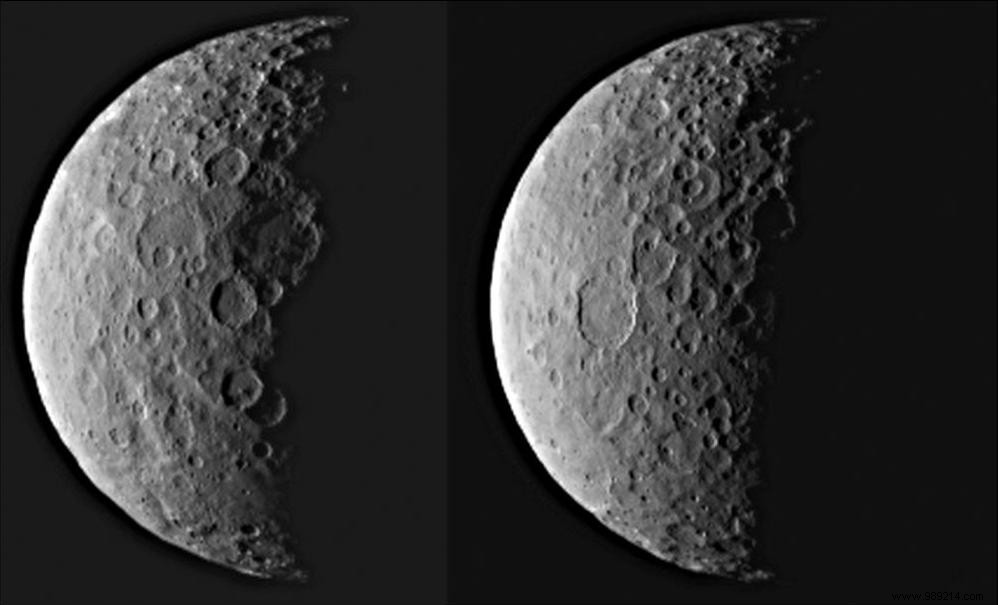The dwarf planet Ceres is "an oceanic world", with liquid, salty water flowing beneath its surface, according to a series of studies published on Monday.
Discovered by Giuseppe Piazzi in 1801, Ceres is the largest object in the asteroid belt, between Mars and Jupiter. This dwarf planet, once considered sterile, has interested the scientific community since the first passage of the American probe Dawn, in 2015.
At the time, the probe recorded strange abnormally bright spots called "faculae" in the dwarf planet's Occator Crater, a 20 million-year-old impact structure of years. The researchers then suggested that these spots could testify to the presence of sodium carbonate (a kind of salt) at the bottom of the crater.
The discovery was significant. And for good reason:here on Earth, sodium carbonate is found in seawater, around hydrothermal vents, where life may well have appeared several billion years ago.
But this sodium carbonate has since remained subject to debate. Some argued that it could come from underground ice that had simply melted under the effect of the heat following the impact responsible for the crater, before re-freezing afterwards. Others, on the other hand, have suggested that Ceres harbored a layer of deep, liquid brine which, upon impact, seeped to the surface before freezing.
New analyzes of the probe data now seem to lean towards the second, much more interesting hypothesis. This work has been published in the journals Nature Astronomy , Nature Geoscience and Nature Communications .

This data was collected during the final phase of Dawn's mission. On this occasion, the operators managed to dive the vessel less than 35 kilometers from the surface from Occator crater.
At this distance, Dawn was able to make gravity measurements which, combined with thermal measurements, allowed the researchers to record density variations compatible with the presence of a deep brine reservoir under the crater . This reservoir, we can read, could then have been mobilized by the violent impact responsible for the formation of the crater. Some pockets of brine would then have ended up gushing to the surface to finally create the salt deposits that we observe today.
In addition, other data also revealed that the porosity rate of Ceres' crust decreases at depth. Sign, we can read, that rock mixes with salt under the surface.
Finally, at the very top of the crater's brightest dome, the researchers also isolated the presence of hydrohalite, a hydrated form of sodium chloride. Interesting point:this common mineral in sea ice, but which until now had never been observed outside the Earth, needs a lot of humidity and dehydrates quite quickly (in a few hundred years all at most). In other words, this suggests that these minerals have sprung to the surface very recently.
Maria Cristina De Sanctis, of the Istituto Nazionale di Astrofisica in Rome, points out that the presence of hydrohalite is a clear sign that this planet once hosted water from sea. "We can now say that Ceres is a kind of ocean world , she says, just like some of the moons of Saturn and Jupiter” .
By the way, water under the surface, there may still be some. What motivates the sending of a new mission? NASA thinks about it. One of these projects, providing for the deployment of a rover on site, is indeed the subject of a concept study. This should be published in the Planetary Science Decadal Survey of the agency in 2023.